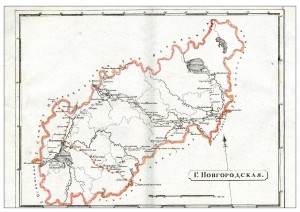A couple years ago one of my Soviet history students, Jessy Mwarage, said he wanted to do a bit of extra work at the opening of the semester, so I gave him some Russian census data from 1897 to play with. He turned the data into very elegant pie charts.
I should add one caveat. I’m not absolutely positive about the quality of the data, but I think it’s reasonably good. Above all, it will give students a sense of the diversity of the population in the Russian Empire.
Russian Census Data, 1897
Total population: 125,640,021 people
Sex: 50.2 % female; 49.8 % male
Urban: 16,828,395 (13.4%); Rural: 108,811,626 (86.6%)
Literacy: 29.3% of males; 13.1% of females were literate
Nationalities (as determined by language)
Religions
- Russian Orthodox: 69.34%
- Muslims: 11.07%
- Roman Catholics: 9.13%
- Jews: 4.15%
- Lutherans: 2.84%
- Old Believers and others split from Russian Orthodox: 1.75%
- Armenian Gregorians & Armenian Catholics: 0.97%
- Buddhists, lamaists: 0.34%
- Other Protestants: 0.15%
Social Groups
Peasants and Cossacks: 99.8 million (79.4% of the total population)
Towndwellers: 13.4 million (10.7%)
Total lower classes: 113.2 million (90.1%)
Merchants, honored citizens: 0.6 million (0.5%)
Church estate: 0.6 million (0.5%)
Nobility: 1.85 million (1.5%)
National minorities [inorodtsy] incl. Jews: 8.3 million (6.6%)
Foreigners: 0.6 million (0.5%)
Source of Income of Main Breadwinner
Agriculture (incl. livestock prod., fishing, forestry): 74.57%
Manufacturing & crafts (esp. sewing, construction, metal, textiles, woodworking): 9.34%
Servants and daily manual workers: 4.61%
Commerce: 3.99%
Transport and communications (nearly one half were horse and cart drivers) 1.55%
Army and navy: .99%
Public administration (state & local authorities): .75%
Living on capital income: .72%
Religious institutions (including clerks & janitors): .63%
Medicine, education, science, literature, and legal practice: .61%
Mining: .44%
Others: 1.8%
Largest Cities of the Russian Empire:
- Saint-Petersburg — 1,264,900
- Moscow — 1,038,600
- Warsaw (now Poland) — 626,000
- Odessa — 403,800
- Łódź (now Poland)— 314,000
- Riga (Latvia) — 282,200
- Kiev (Ukraine) — 247,700
- Kharkov (Ukraine) — 174,000
- Tiflis (Tbilisi, Georgia) — 159,600
- Wilno (Vilnius, Lithuania) — 154,500
- Saratov — 137,100
- Kazan — 130,000
- Rostov-on-Don — 119,500
- Tula — 114,700
- Astrakhan — 112,900
- Katerynoslav (Dnipropetrovsk, Ukraine) — 112,800
- Baku (Azerbaidjan)— 111,900
- Kishinev (Chişinău, Moldova) — 108,500
- Helsinki (Finland) — 93,000
- Minsk (Belarus) — 90,900
Data from Wikipedia (English and Russian) and other sources. Pie charts by Jessy Mwarage.
